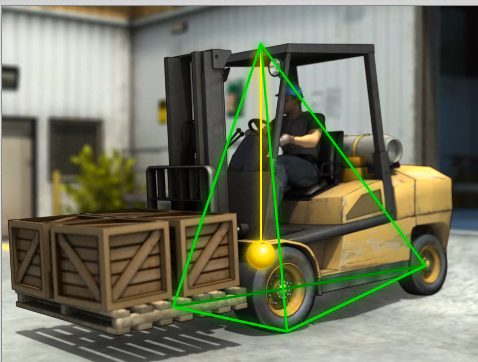Effective Training Visuals—Add a Spark of Interest


Here’s the sixth in a series of blog posts written to help you evaluate elearning courses by considering how well their visuals add to the effectiveness of the training. It’s also the final installment in this series.
If you’re reviewing the memories at home, the five earlier posts have covered:
- Organizing on-screen visual elements to ease perception
- Using visual elements to direct the viewer’s eyes
- Reducing the processing load by reducing realism
- Using visual displays to make abstract concepts more concrete
- Using visuals to make complex information more clear
In this post, we’ll discuss some techniques for creating visuals that add a “charge” to your training, grab attention, and make the material easier to remember later.
As a final reminder, the ideas below originated in the book Visual Language for Designers: Principles for Creating Graphics that People Understand by Connie Malamed. She’s one of our favorite bloggers in the learning world, so please check her blog to learn more about instructional design and the book these ideas are drawn from. Also, keep your eye out for the new book that she’s writing now; we’re sure it will be great when it’s ready. And one last big thank you to her for pulling together the book this series was based on.
The visuals used as examples come from elearning courses created by Convergence Training.
Charge the Brain Up
Research into cognition and common sense both tell us that there are some things that draw people’s attention and help us to remember. That’s what this final episode is all about—things that add a spark of interest to training because our brains crave them.
In particular, we’ll look at four different graphic techniques. These include visuals that:
- Appeal to our emotions
- Involve aspects of storytelling and narratives
- Make use of visual metaphors
- Are unexpected and/or humorous
Let’s get the show on the road, shall we?
Emotional Appeals
Our brains react quickly and strongly when emotions are involved. People tend to focus their attention on emotional aspects, they tend to prefer emotional content over neutral content, and the additional emotional spark seems to play a role in increasing memory.
Artists can introduce emotional elements in many ways. A simple way is through the use of color. For example, the red highlight on the machine below quickly communicates danger.

The image of a pedestrian near a forklift below makes use of that same color-coded emotional message to illustrate the hazards of pedestrians near mobile machinery.

Yet another way to appeal to emotions is to show something we all share an emotional response to—like the tornado in a dark, forbidding sky below.

You can also appeal to emotions by showing a person in danger. For example, the man falling from a forklift below grabs your attention through his dangerous position and the expression on his face.

And, more subtly, the woman’s expression below helps demonstrate the hazards of stress at the workplace.

Storytelling and Narratives
In ancient times of yore, people gathered around fires and listened to stories about Gilgamesh, Beowulf, El Cid, Achilles, Odysseus, Aeneas, Roland, and others. Today, we spend millions gathering in darkened movie theaters to watch similar stories.
Why? Because people like stories. Plain and simple.
So it certainly pays off to take advantage of this and include stories and storytelling techniques in your training materials. That can mean threading fascinating scenario-based learning into your courses, sure, and we encourage you to do that (watch for an upcoming Convergence blog series about this). But it can also include simpler things, such as representations of sequences and processes.
For example, the image below represents all the complexity of the papermaking process and illustrates it in three simple steps—make the sheet of paper on a paper machine, roll it on a winder, and produce packaged sheets on a pallet for shipping. Pretty nice for an overview, perhaps as part of an introduction.

Or, to tell a more detailed version of the same story, the graphic below is more appropriate. This might be nice to include as a still frame, allowing the learner to review at his or her own pace.

Visual Metaphors
We probably all make use of analogies when explaining something to another person during a conversation. Visual designers can make use of visual analogies to help explain things as well.
For example, the image below helps to illustrate the different amounts of “drag” on particles of different shapes as they fall and settle through a substance by representing the particles as skydivers. The larger the surface area, represented by the width of the arc, the more drag.

Or, consider the image below, taken from a course on forklift safety. The artist makes use of a see-saw to explain the balance of forces between the forklift’s counterweight and the weight on the forks. This takes an unfamiliar and perhaps hidden aspect of forklifts and puts it into a context most people are familiar with and understand easily.

And in the image below, taken from the same forklift safety course, the stability of a forklift is represented visually as a yellow pendulum within a green “stability triangle.” Just keep the weight, represented by the yellow pendulum, centered within the green triangle and the forklift is stable and safe.

Novelty and Humor
People like unexpected things and they like funny things (and, sometimes something is funny just because it’s unexpected). This is why novelty and humor can be effective in training, though of course it’s important to use common sense and not use coarse humor or humor that will insult, alienate, shame, or offend others. But you knew that, no?
For example, the image below is a humorous representation of the H1N1 flu virus. The artist could have made a realistic interpretation of the virus, but in a course focused on the importance of things like hand washing and getting vaccinated, the humorous approach seemed more effective.

And the image below puts an unexpected twist on safety icons (and the Jolly Roger) to represent potential hazards while working on industrial machinery, perhaps grabbing the attention of a learner who’s just about to fade out at the simple thought of safety training.

That’s It, Folks
Using the techniques demonstrated above, as well as the techniques from the previous posts in this series, should help you create more effective training materials (or recognize them, at least, if you’re buying instead of building).
Because this is the final post in the series, Convergence Training would like to thank the readers for your sustained attention, OpenSesame for providing the opportunity to write about all this, and OpenSesame blogger Kate Cornelius for all her efforts in managing the process from her side. Thanks to you all; we hope you found it interesting, helpful, and fun.
Hope to see you all again on this blog or elsewhere in the learning world. Cheers!
Jeff Dalto is an Instructional Designer and Trainer at Convergence Training. You can keep up with Jeff at the Convergence Training blog or on LinkedIn, Google+, Twitter, and Facebook.



